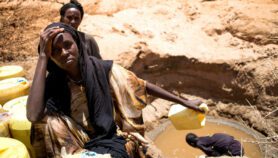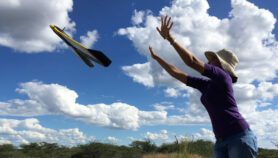By: Catarina Chagas
Send to a friend
The details you provide on this page will not be used to send unsolicited email, and will not be sold to a 3rd party. See privacy policy.
Researchers have found that ancient Amazonian populations lived in densely populated urban settlements, contrary to popular belief.
They say understanding of how these communities developed could offer lessons for conservation and sustainable development of the Amazon today, particularly for maintaining biodiversity.
According to a paper published in Science last month (29 August) grid-like patterns of towns and villages, and complex, well-planned road networks were part of the ancient Amazon way of life.
The Brazilian and US researchers identified 28 prehistoric sites in the Upper Xingu region of the Brazilian Amazon using satellite images and ground surveys. Further excavation of the sites revealed evidence of a highly productive culture and a landscape centred on agriculture, with signs of farming and extensive wetland management, including fish farming.
"Ancient Amazon populations were generally considered to have been small-scale, semi-sedentary communities that were autonomous and fairly dispersed, practicing extensive slash-and-burn agriculture by cutting new gardens from mature forest," says Michael Heckenberger, lead author of the paper from the University of Florida, United States.
"Our work suggests there were many areas with regional societies, that were fairly densely settled, sedentary, and practiced semi-intensive agriculture."
The researchers write that the patterns found are similar to those of modern proposed networks of small well-planned towns, "green belts" of agricultural and forest land and a subtle gradient between urban and rural areas, but "uniquely adapted to the forested environments of the southern Amazon".
They say understanding of this ancient planning could feed into strategies of resource management and "merit consideration in current models and applications of imported technologies, including restoration of tropical forest areas".
"We all know that current methods of forest denudation are bad in the southern Amazon and so any intermediate approaches can provide useful alternatives to clear cutting or, conversely, extensive slash-and-burn," Heckenberger says.
"Understanding and valorising indigenous semi-intensive approaches is particularly important in indigenous lands which make up over 20 per cent of Brazilian Amazon."
Heckenberger says that understanding the diversity and dynamic nature of indigenous history is an important component for recognising indigenous cultural rights, as complex societies or civilisations.













